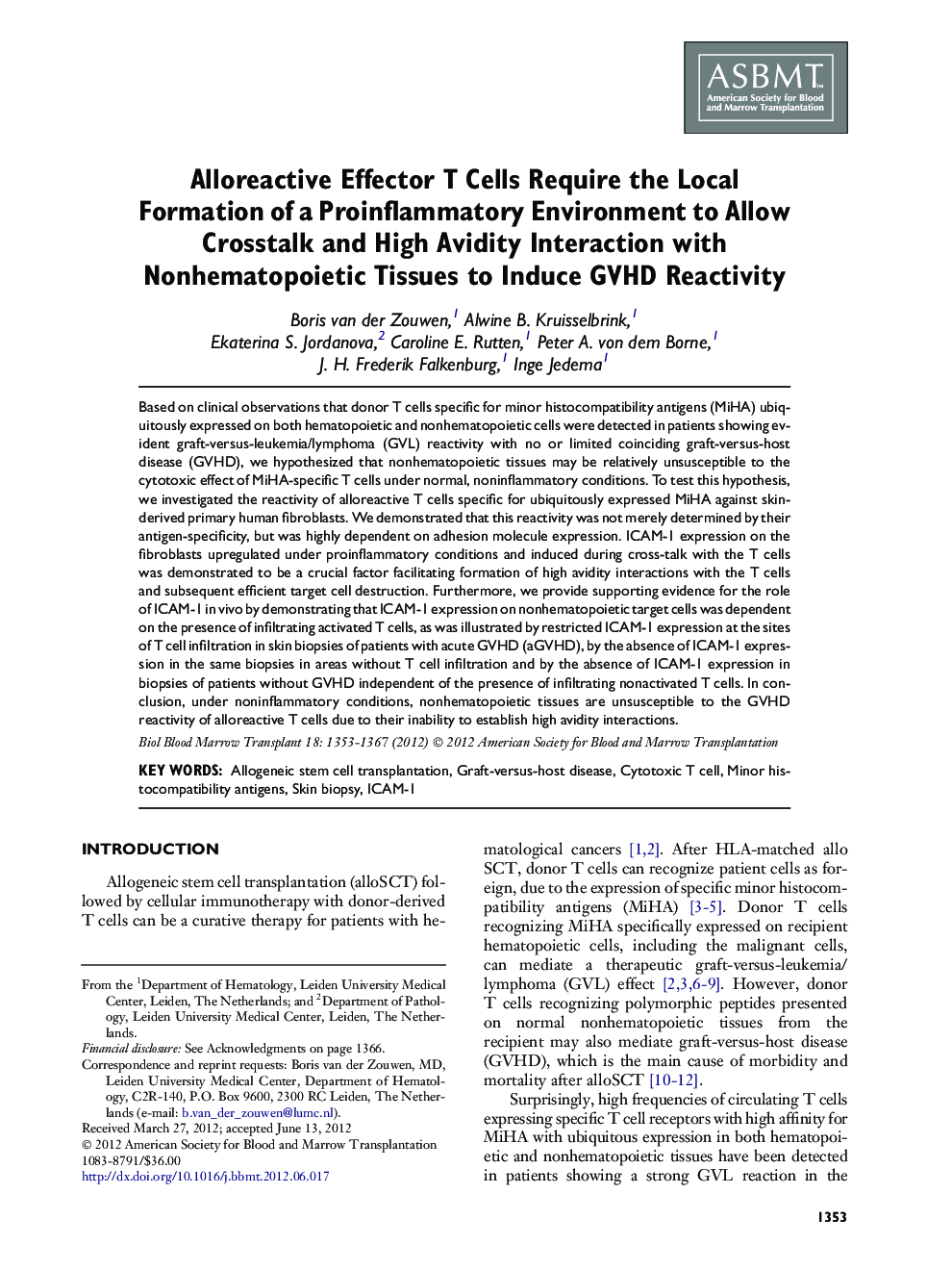| Article ID | Journal | Published Year | Pages | File Type |
|---|---|---|---|---|
| 2102634 | Biology of Blood and Marrow Transplantation | 2012 | 15 Pages |
Abstract
Based on clinical observations that donor T cells specific for minor histocompatibility antigens (MiHA) ubiquitously expressed on both hematopoietic and nonhematopoietic cells were detected in patients showing evident graft-versus-leukemia/lymphoma (GVL) reactivity with no or limited coinciding graft-versus-host disease (GVHD), we hypothesized that nonhematopoietic tissues may be relatively unsusceptible to the cytotoxic effect of MiHA-specific T cells under normal, noninflammatory conditions. To test this hypothesis, we investigated the reactivity of alloreactive T cells specific for ubiquitously expressed MiHA against skin-derived primary human fibroblasts. We demonstrated that this reactivity was not merely determined by their antigen-specificity, but was highly dependent on adhesion molecule expression. ICAM-1 expression on the fibroblasts upregulated under proinflammatory conditions and induced during cross-talk with the T cells was demonstrated to be a crucial factor facilitating formation of high avidity interactions with the T cells and subsequent efficient target cell destruction. Furthermore, we provide supporting evidence for the role of ICAM-1 in vivo by demonstrating that ICAM-1 expression on nonhematopoietic target cells was dependent on the presence of infiltrating activated T cells, as was illustrated by restricted ICAM-1 expression at the sites of T cell infiltration in skin biopsies of patients with acute GVHD (aGVHD), by the absence of ICAM-1 expression in the same biopsies in areas without T cell infiltration and by the absence of ICAM-1 expression in biopsies of patients without GVHD independent of the presence of infiltrating nonactivated T cells. In conclusion, under noninflammatory conditions, nonhematopoietic tissues are unsusceptible to the GVHD reactivity of alloreactive T cells due to their inability to establish high avidity interactions.
Keywords
Related Topics
Life Sciences
Biochemistry, Genetics and Molecular Biology
Cancer Research
Authors
Boris van der Zouwen, Alwine B. Kruisselbrink, Ekaterina S. Jordanova, Caroline E. Rutten, Peter A. von dem Borne, J.H. Frederik Falkenburg, Inge Jedema,
